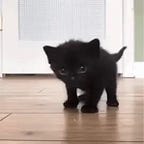Freudian Instinct Theory
The following is essentially my breakdown/notes on Freud’s theories of eros and the death instinct as outlined in chapter two of An Outline of Psychoanalysis. These notes are intended to further my own understanding but I’m sure there is at least some utility in sharing. Miss u all. (Especially Becky, Mouse, Bee, Neve, Finn and Iliana:D)
Firstly, instincts are the forces which are assumed to exist behind the tension caused by the Id’s demands which represent somatic demands upon the mind.
Freud assumes the existence of two primary instincts, which broadly encompass a much larger sum of more specific desires, Eros and the destructive instinct.
A note: The destructive instinct is more commonly referred to as the death instinct, this is how I refer to it for the rest of the notes.
The aim of the first of these is to establish ever greater unities and to preserve them thus — in short, to bind together; the aim of the other, on the contrary, is to undo connections and so to destroy things.
An Outline of Psychoanalysis, 18
These instincts may appear on the surface to be in contrast, or mutually exclusive, however it is important to understand that they can operate either against one another or combine.
For example, in eating, a person destroys with the intent of combining the food with himself.
These two “mutually opposing” instincts and their relations determine the variation in life's phenomena.
The proportion of Eros to Death Instinct has tangible results. Freud takes the example of a romantic relationship, which is sustained only as such by a certain proportion of E/DI towards the object. If the proportion changes, so does the external dynamic. If we see an intensification of the DI within the relationship, the lover becomes a sex murderer, and with a de-intensification, the lover becomes bashful.
To summarize shortly, the balance of Eros:DI is what determines an individuals relationship with a given object.
In it’s earliest stage, this dynamic is visible in the undifferentiated ego-id. The human is only Id and Eros serves only to neutralize the harm caused by the free flow of animalistic desire.
Less traceable is the DI, which is only apparent through an outward diversion of energy towards the instinct to destroy.
With the establishment of the superego, a considerable amount of aggression derived from the death instinct are diverted towards the inside of the ego self-destructively. This “holding back” of aggression is harmful to an individual’s health as it is only redirected towards the self. This redirection is observable during a person’s fit of rage, which sees them redirect anger, which they clearly would like to apply to someone else, onto himself (this is observable through the pulling of hair, hitting head against a table, etc).
To Freud, the individual dies of internal struggle, whereas the species dies of an inability to adapt to the changes of the outside world.
The relation between libido (energy of Eros) and the Ego develops as follows:
In its earliest stage, Libido is focused on the ego itself, the preservation of the individual’s own self (thus nullifying to some degree the destructive tendencies of pure Id). This process is termed primary narcissism.
The Ego then begins to focus Libido on the ideas of objects, thus transforming the narcissistic-libido into the object-libido.
Throughout life, the ego remains the reservoir for libidinal energy, which is sent out to cathect with various objects, and retracted back into the ego.
Love is a near complete transfer of libido from the ego to an object. (The object takes the place in storing libido).
The libido has the quality of mobility, which transfers from object to object over the span of a life. On the contrary, libido may become fixated on an object throughout the span of life as well.
